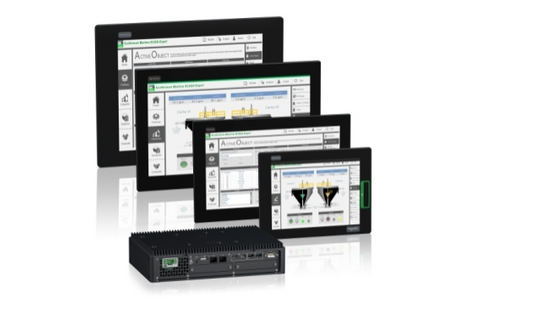Workforce empowerment through connected HMIs

[Source: Schneider Electric UK]
Schneider Electric argues that when planning industrial digitisation projects, it is important to consider people, process, and technology. IIoT promises secure access to a lot of data but for it to be useful, staff need information, not data. Not only that, but it also needs to be available wherever they are and whenever they need it. This includes on the plant floor, near production equipment and even in the offices or off-site.
Workforce empowerment
Workforce empowerment lets workers use information to make decisions that improve plant performance through:
- Connecting employees in all departments to the available data and combining it with collected staff knowledge
- Presenting insights to workers whenever and wherever they need them in a straightforward, easy to understand way
- Sharing best practices across all plants so they can have the greatest impact
Human Machine Interfaces (HMIs) began as a way for operators to interact or control machines or processes. Initially used in control rooms or plant floor control panels, they replaced hard wired push buttons and indicator lights. They used text displays, but no graphics and were not portable so operators needed to go to them.
Today’s HMIs are programmable replacements for pushbuttons and indicator lights. They can transform complex data into useful information. Easy-to-understand visual displays give meaning and context to near real-time information and insights about how well processes are running. This allows them to do much more than control processes.
HMIs as industrial PCs (IPCs)
They have powerful processing and networking capabilities. Their mobility also offers new opportunities to improve product quality and make systems more efficient. HMIs provide workers with access to guidance or remote expertise wherever they are working, even outside the facility. Moreover, they can function as powerful edge computers for gathering and processing real-time data to support tools like predictive maintenance.
Empowering operators allows better decision making for improving the quality of both products and services. Furthermore, the Schneider Electric Harmony P6 HMI helps improve productivity and operational efficiency. It provides an end-to-end cybersecure transparent plant data network for more efficient operations and maintenance of capital assets. It supports people with the performance, networking and display capabilities needed to get the most from digital transformation.
The processing, display and computing power of modern modular IPCs make them a cornerstone of an industrial digital transformation strategy. When combined with EcoStruxure Automation Expert, users can deploy the computing capabilities needed for calculation intensive applications. This includes well-presented real-time information for industrial systems that allow staff to improve performance and address problems early.
Harmony P6 industrial PC and software with end-to-end cybersecurity in the cloud and on-premises empowers workforces by putting digital technology to work for them. Watch the Video on Harmony P6.
Recent blog posts
